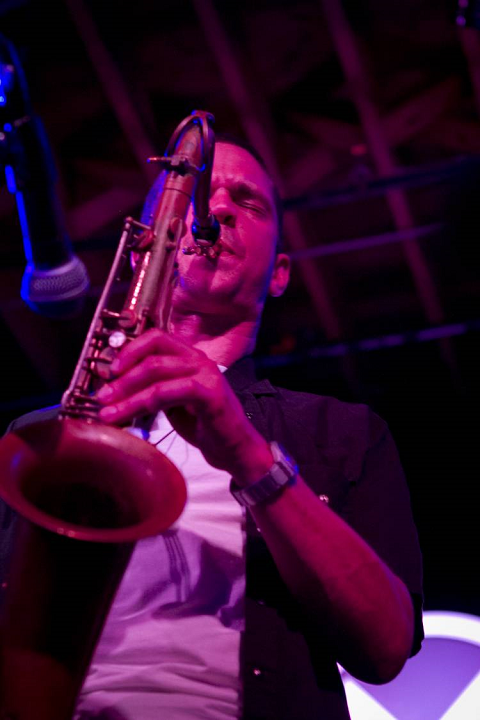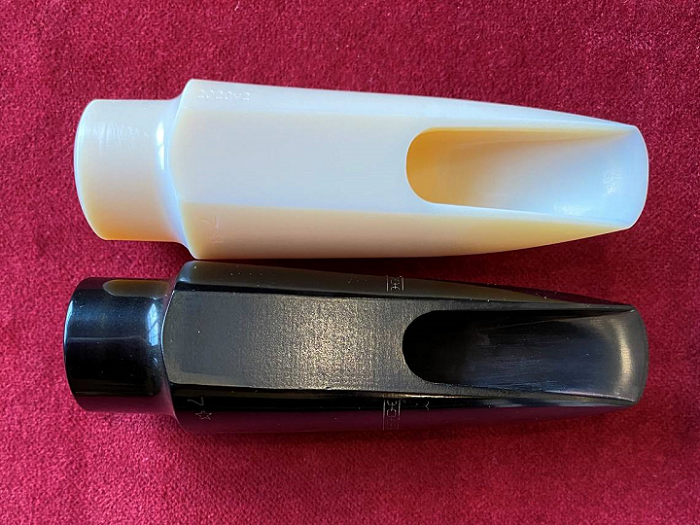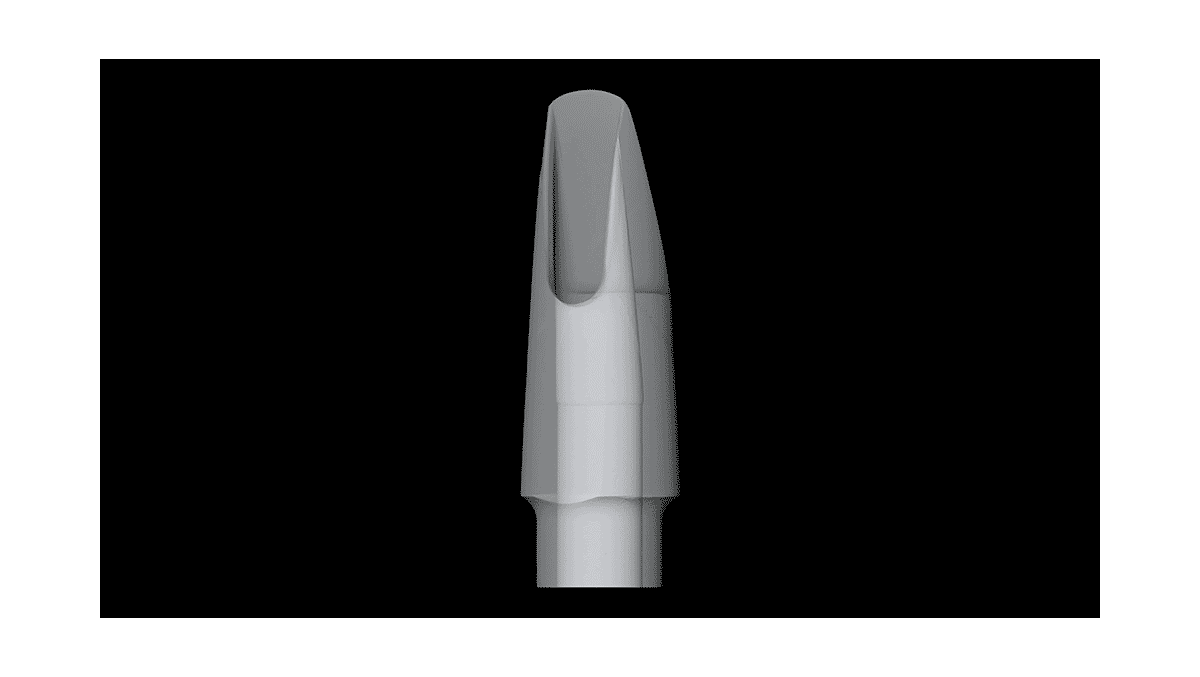Reverse-Engineering Vintage Sax Sound with 3D Printed Mouthpiece Replicas
I’ve mentioned before that I’m something of a very amateur, volunteer musician, so I’m always excited to hear about 3D printing applications related to making music. Mechanical engineer Matthew Busch, who works for Duke University’s physics department and the Triangle Universities Nuclear Lab, is also a musician, albeit probably a much better one than I am, and when he’s not designing particle accelerators and equipment for studying neutrinos, he’s playing the saxophone. Now, he’s working with other Duke researchers to combine his two passions by using 3D printing and X-ray imaging to reverse-engineer the sound of a vintage sax; not to improve upon it, but to make sure that the historic sound stays alive for another generation of musicians.
Busch said, “I’m a third-generation saxophone player,” noting that both his grandfather and father played the sax as well. “I had my choice of instruments to pick out, but I did not have the choice of not having an instrument.”

Matthew Busch playing saxophone at Durham’s Motorco Music Hall in 2014. Photo by Alexandrea Lassiter/Copper Key Photo
Busch describing the sound he makes from using different mouthpieces is like a sommelier describing different vintages, with words like “warm,” “balanced,” and “bright.” Two mouthpieces that he tried—a copy of an Otto Link from the 1930s and a tenor sax Selmer from the 1950s—were used back in the day by such celebrated jazz players as John Coltrane and Charlie Parker, but they aren’t widely used today, and the modern replicas don’t stand up to the originals in terms of sound.
Luckily, Busch has access to Duke’s Shared Materials Instrumentation Facility (SMIF), which lets individual labs who don’t have the necessary labor costs use its sophisticated equipment. He set up what’s called a Bass Connections team, consisting of students and other faculty members working to solve societal problems, to help him use CT scanning and X-ray imaging to accurately capture the internal details of vintage sax mouthpieces from the 30s-60s for a digital archive, which can be used to 3D print replica mouthpieces that are hopefully more precise than those created with more conventional methods of manufacturing.
As with most things in 2020, the COVID-19 pandemic slowed their progress, but the team did manage to scan three vintage mouthpieces before the year-long project was shut down.

This replica of a vintage saxophone mouthpiece (top) was 3D printed using microCT scans of the original (bottom). Courtesy of Brian Curry.
Micro-CT scanning was used to create digital 3D models of the objects in this project, like a unique 1940s Otto Link Reso Chamber tenor sax mouthpiece, and could capture extremely small details, such as scratches and chips 20 times finer than a strand of human hair. Josh Socolar, a Professor of Physics, researches condensed matter physics and dynamical systems at Duke, but also teaches a course on the physics of music, which sounds really interesting. For this project, Socolar wrote a computer program that can digitally dissect each of the scanned mouthpieces in order to analyze how various parameters contribute to the sound.
Socolar explained that the rush of air created by blowing into a saxophone travels over a flexible reed in the mouthpiece and vibrates it, which then makes the air inside the sax vibrate and produce a note. By opening and closing various holes, or keys, along the body of the sax, the length of the air column that the sound waves pass through changes, which causes the pitch to change as well. However, the internal geometry of a sax mouthpiece is mostly what sets the timbre of the instrument.

Duke researchers have been using X-ray imaging and 3D printing to create high-fidelity reproductions of vintage saxophone mouthpieces that are becoming increasingly rare. Courtesy of Duke SMIF.
In his computer program, Socolar can map the contours of the mouthpiece’s inner surfaces, where the sound is most affected by even small variations, and turn said contours into curves, functions, and equations. The parts he’s most interested in are the baffle, which is the first thing the sound wave hits inside the mouthpiece, and a curved surface called the facing against which the reed vibrates.
Socolar plays the keyboard, not the sax, but one of his former “Physics of Music” students, Gia Jadick ’20, has played saxophone since high school. Jadick, a member of the Bass Connections team, double majored in physics and political science, and had the chance to view a variety of sax mouthpieces, with all their different geometries and shapes, when she was given the task of cleaning them at band camp one year. While the roughly two dozen mouthpieces were drying out after she cleaned them, she began to notice all of the differences between them.
Jadick said, “This was the first time I’d really been exposed to all the different shapes and geometries that you could have.”
Her part in the project, formally titled “The Art and Craft of the Saxophone Mouthpiece,” was to record different musicians playing with the originals as well as the 3D printed versions, and then analyze the results, looking for any link between the shape of the mouthpiece and the sound they emit. She was originally going to visit clubs and have performers test the mouthpieces, but due to the pandemic, most of the researchers recorded themselves playing in their own homes.
“My primary role is the audio analysis, so I use Python to produce spectrograms and Fourier transforms of recorded audio files to then assess differences in mouthpiece quality by writing various mathematical functions,” Jadick explained.
She converted each recording into a spectrum plot, which decomposed it into its various frequencies, and then worked with Max Bartlett ’20 to analyze the peaks and valleys. Jadick also asked some of her musician friends to rate each one in terms of qualities like resistance and ease of tuning. It definitely wasn’t easy to determine the certain geometrical parameters that make each mouthpiece sound different.
Busch explained, “The reason is a specific dimensional change in a mouthpiece gives different results for different players.”
Additionally, how sax players position their tongues, hold their lips, and alter their vocal tracts “contribute in ways that are almost impossible to analyze from a purely physical point of view,” according to Socolar.

3D digital model of a rare 1940s Otto Link Reso Chamber tenor saxophone mouthpiece customized by master craftsman Freddie Gregory.
But, the team members did find that they could get pretty close to the feel and sound of the original mouthpieces using the 3D printed replicas. Busch is still planning to scan and 3D print more mouthpiece replicas when pandemic conditions make it possible to do so, and is turning the project into a startup with his friend Brian Curry, a collector.
(Source: Duke University)
Subscribe to Our Email Newsletter
Stay up-to-date on all the latest news from the 3D printing industry and receive information and offers from third party vendors.
Print Services
Upload your 3D Models and get them printed quickly and efficiently.
You May Also Like
3D Printing News Briefs, May 3, 2025: Executives, Awards, & a 3D Printing Factory
We’re focusing on additive manufacturing business news today, as both Velo3D and PostProcess Technologies announced changes to their Boards of Directors. Sandvik Metal Powder has a new president, and Klas...
EOS Releases Medical Device Master File for M290 3D Printer
Laser powder bed fusion (LPBF) firm EOS has released a Medical Device Master File that will make it easier for customers to achieve regulatory success. The file will essentially be...
Velo3D Secures $22M Metal 3D Printing Powder Supply Deal with Amaero
Velo3D (OTCMKTS: VLDX) has signed a major new agreement with metal 3D printing powder manufacturer Amaero (ASX: 3DA). The five-year deal is valued at USD $22 million and centers around...
Push Button Metal 3D Printing for $50,000?
In 2021 we wrote an article about “Push Button Metal, the low cost metal 3D printing evolution we are not talking about.” In it, we talked about One Click Metal,...






























